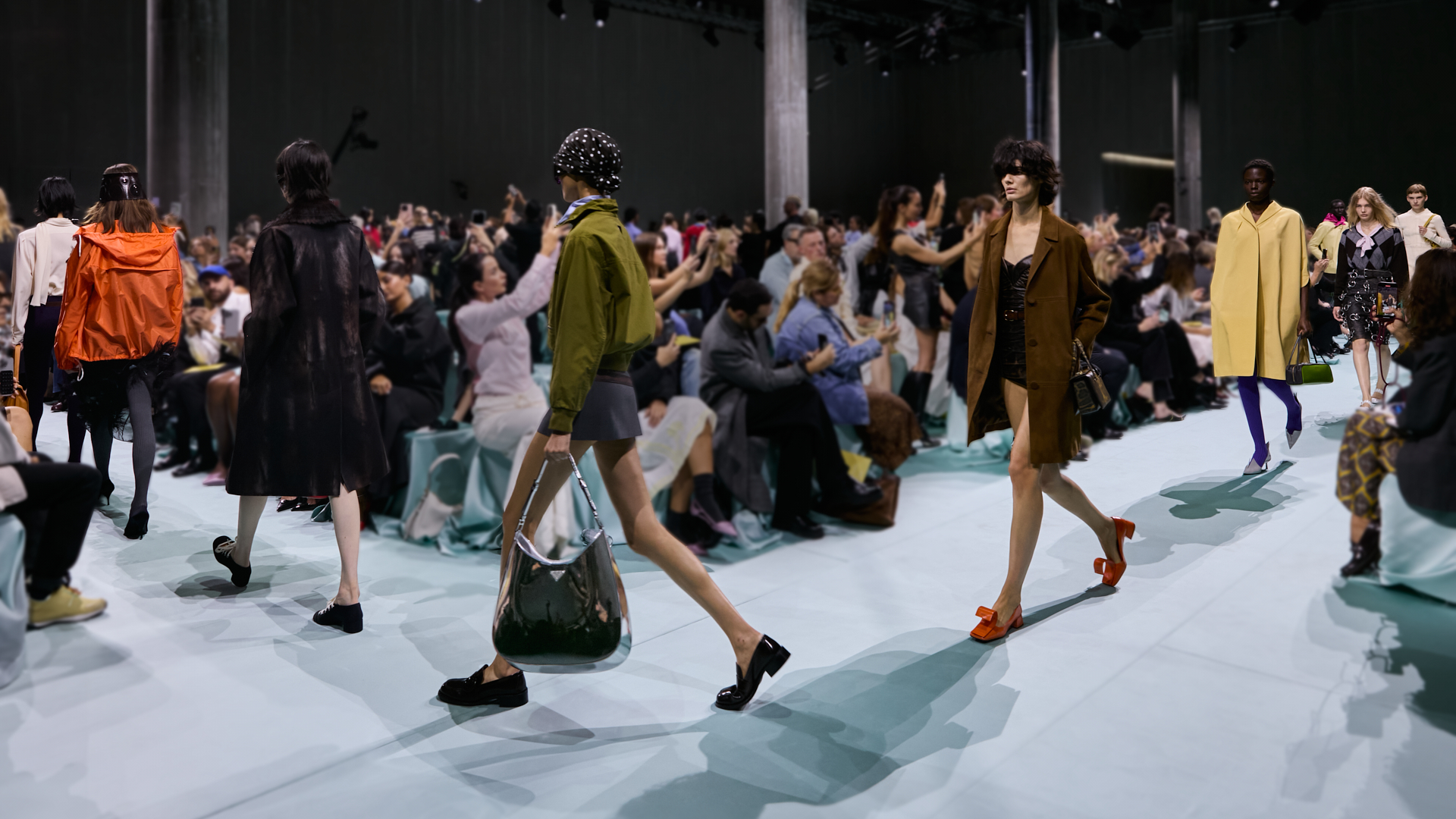
Earlier this year, Jonathan Anderson described his S/S 2025 menswear collection as one of ‘irrational clothing’ – an embrace of the strange and the unexpected, inspired by the experimental attitude towards dressing he had witnessed among young people at Primavera Festival in Barcelona earlier that summer. ‘The experimentation with clothing among younger generations is incredible,’ he said at the time. ‘The eye has changed.... people want something that is really challenging.’
Anderson is astute with a soundbite, and the idea of ‘irrational clothing’ could equally have been applied to the womenswear collections shown this past month in New York, London, Milan and Paris. By and large, there was a marked disavowal of ‘quiet luxury’, seeing restraint thrown out the window in the pursuit of the bold and eclectic. If sometimes this led to a lack of cohesion – with designers seeming to ricochet between ideas – when it was done well, it made for some enlivening fashion moments. Such was the case at Prada, where Miuccia Prada and Raf Simons presented a freewheeling collection that paid homage to individual style, traversing Prada eras and comprising 49 near-completely different looks filled with colour, texture and shifting silhouettes. A similarly eclectic approach provided transporting collections from Valentino, Bottega Veneta, Loewe and Louis Vuitton, which were among the highlights of the season.
Here, Wallpaper* fashion features editor Jack Moss unpacks the S/S 2025 womenswear shows, from an embrace of the eclectic to a new mood in tailoring, and clothing where nothing was quite what it seemed.
The season was an homage to individual style

A Prada show is usually a barometer for the season, such is the knack that Miuccia Prada has for shifting the fashion needle, reimagining the familiar in oftentimes electrifying new ways (now, she does so alongside Raf Simons, her co-creative director and another fashion soothsayer). For S/S 2025, a radical new proposition from the pair: the decision to do away with trends or thematics entirely, choosing instead to present a freewheeling and eclectic collection that celebrated individual style. It was a riposte, said Mrs Prada backstage, to the way that the social-media algorithm smooths personal style and siloes us into social-media echo chambers. ‘We are driven by algorithms,’ she said. ‘We like things because people tell us to like them.’ As such, the pair spoke about rejecting the ‘derivative and expected’ for a stream of 49 near-entirely different looks that veered between sculptural high-shine silver skirts dotted with enormous eyelets, leather dresses with BDSM hooks and elements of trompe l’oeil (there were also feathers, bug-like sunglasses, and day-glo anoraks). It made for an enticing visual feast, ‘a Prada for each individual’. ‘We thought of each individual as a superhero – with their own power, their own story,’ said Simons.
‘We thought of each individual as a superhero – with their own power, their own story’
Raf Simons
Also in Milan, Matthieu Blazy struck a similar mood at Bottega Veneta, which he described as an attempt to evoke a sense of childhood wonder (as such, the animal-shaped beanbag chairs were a reference to the scene in E.T. when the title character hides amid a closet full of cuddly toys). Blazy said that the collection began by thinking about a suited businessman taking his child to school while carrying their pink cartoon rucksack or lunchbox over his shoulder. The collection was full of such juxtapositions, seeing ‘Italian sartorialism’ clashed with playful flourishes, from tasselled wigs to blown-up tailoring and animal motifs. Like at Prada, barely two looks were the same, and it was a definitive statement that luxury fashion needn’t be discreet nor restrained – rather, it should spark joy. ‘[This collection] encompasses the joy of looking, discovering and dressing,’ the designer said. ‘Last season was maybe more contemplative. But at the same time, we need beauty. We need joy. We need this moment for ourselves, and continue to play.’ In Paris, Nicolas Ghesquière felt similarly liberated – his 1980s-infused collection seemed to recall the flamboyant, individual style of the New Romantics, albeit with the designer’s always-futuristic sheen – while Alessandro Michele opened his tenure at Valentino with a musing on beauty that was as richly expansive as his collections for Gucci (he left the Italian house in 2022). Over the collection’s mammoth 85 looks were hundreds of elements, among them ruffles, feathers, polka dots, floral motifs, wide-brimmed hats, facial piercings, ladylike handbags (sometimes worn two-a-piece) and ribbon-tied pumps. Again as at Prada, it was a bold invitation to experiment with clothing – a maxim that defined the season.
Designers reimagined the everyday
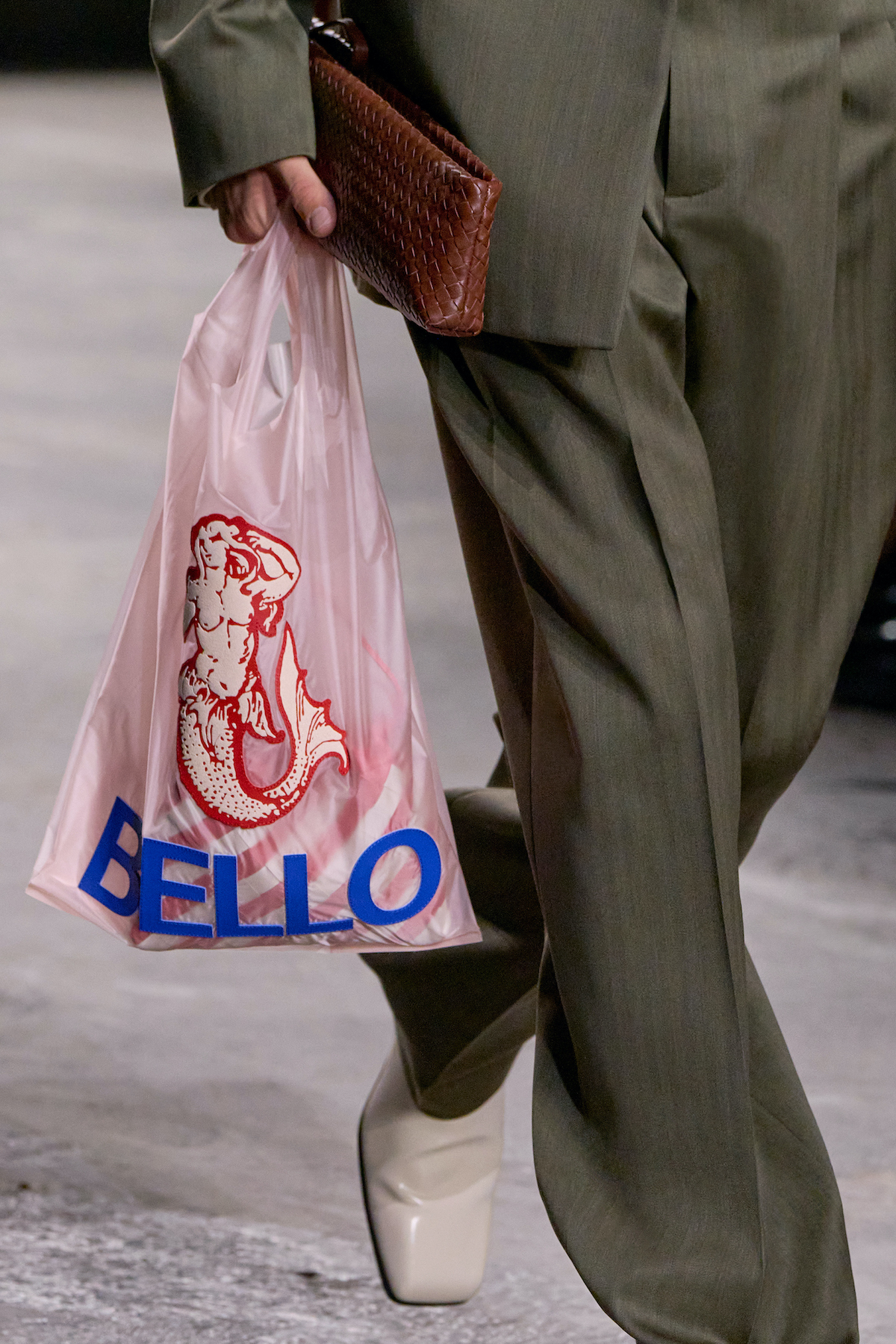
Despite its more dramatic flourishes, Blazy’s latest collection for Bottega Veneta was rooted in the idea of everyday style (‘everyday adventures’, is how he described the collection’s mood). As such, objects like the plastic corner-shop bag – here recreated in heat-pressed nylon – were elevated onto the runway, alongside bunches of flowers (woven from leather), brown paper bags (more leather), and shopping baskets (also leather). Such transformations were also applied to clothing: this season, he continued to riff on everyday garments like jeans, crumpled T-shirts and corporate tailoring, albeit in luxurious style. ‘I was interested in the simple acts of fashion that happen everyday,’ said Blazy. Demna, creative director of Balenciaga, is also known for taking disparate objects – like crisp packets, toolboxes and rubbish sacks – and turning them into fashion accessories. This season, though, Demna looked towards archetypal garments, like denim jeans, and radically altered their proportions (his version sat perilously low on the waist). Elsewhere, dresses looked as if a classic trench coat had been tied around the body, while padded jackets were reshaped to recall Cristóbal Balenciaga’s ‘cocoon’ silhouette.
‘I was interested in the simple acts of fashion that happen everyday’
Matthieu Blazy
At Issey Miyake, models carried shopping-style bags filled with bunches of flowers, as if on a trounce to the market, while Anderson’s latest Loewe show featured feathered T-shirts handpainted with works by Vincent Van Gogh, including Irises and Sunflowers. Reflecting the designer’s idiosyncratic approach, these were not inspired by encountering the paintings in a gallery, but by the reproductions he sees on tea towels and T-shirts while driving to work each day past the tourist markets that line the River Seine. ‘We get so used to them that they become a kind of high-low culture,’ he said, placing what he called the ‘burned-out’ images in a new context as an attempt to shift the eye. ‘[They are artworks] we are always magnetically drawn to... There’s something that we want to be part of, something, even if we don't understand it.’ The same can be said for Anderson’s collections for Loewe, which continue to intrigue.
There was a tailoring redux
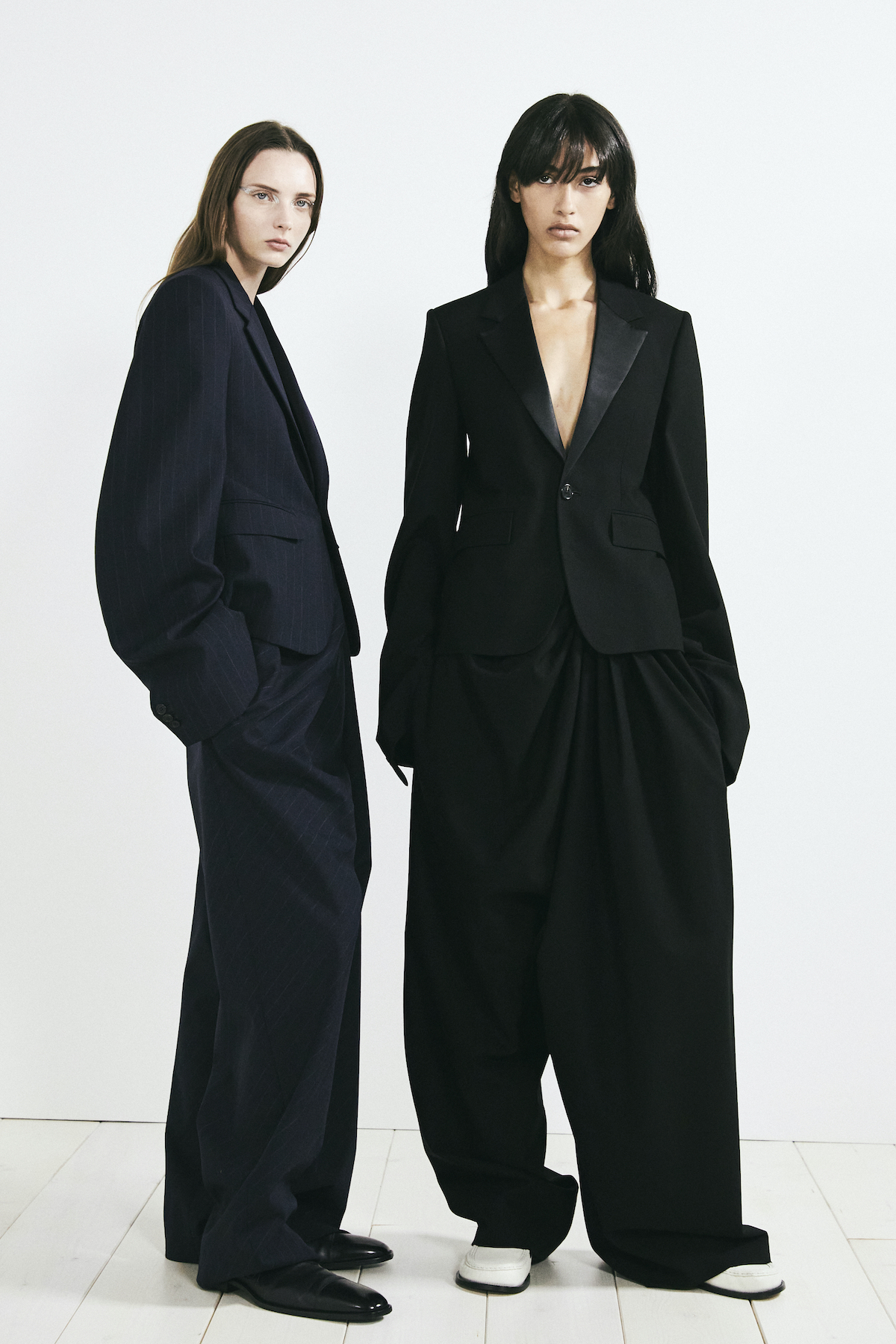
Backstage after that show for Loewe, Anderson touched on the evolution of tailoring at the house during his tenure. ‘Historically, tailoring was something Loewe wasn’t good at for a long time, but I think we’ve been able to do it right, and come up with a kind of signature,’ he said. ‘Tailoring is about the subtlety of the change, and it’s taken me years to understand that.’ His proposition here was a tailored jacket with long, gently flared sleeves and baggy trousers that twisted cleverly towards the waistline. The result was roomy and generous, though the silhouette – a move from a relatively narrow shoulder line towards the more voluminous weight of the trouser – was one of louche elegance. It was proof that tailoring remains fertile ground for designers, something Simon Chilvers discussed in the September Style Issue of Wallpaper*, in regards to men’s tailoring. Womenswear, if anything, allows for even more sartorial experimentation, unrestrained by the still-conservative mores of men’s suiting.
‘Tailoring is about the subtlety of the change, and it’s taken me years to understand that’
Jonathan Anderson
Such experiments were in evidence across the various cities: in Paris, Victoria Beckham turned blazers inside out or sliced tailored trousers down the leg to expose the pocket lining, while another trouser shape sat away from the waistline through clever use of corsetry (in New York, Tory Burch evoked a similar effect on skirts). At Dolce & Gabbana in Milan, jackets were inserted with a Jean Paul Gaultier-inspired ‘cone-bra’ (an ode to Madonna, who sat front row and inspired the collection), while at Emporio Armani, the designer revived his 1980s suit and tie for women with a multitude of iterations of the blazer, including those folded sharply along their front. At Seán McGirr’s sophomore show for McQueen, jackets were cut to evoke the feeling that they were being grasped close by their wearer to protect them against the elements. Though perhaps the most seductive proposition for this season’s tailoring was that at Saint Laurent, where Anthony Vaccarello revived the languid, broad-shouldered tailoring of his menswear collection earlier this year – which was no doubt was inspired by Mr Armani’s tailoring of the 1980s – to evoke the wardrobe of Yves Saint Laurent himself, from a fluid black tuxedo (modelled by Bella Hadid who also wore the couturier’s famous thick-rimmed glasses) to beige and grey double-breasted tailoring.
American fashion was dissected
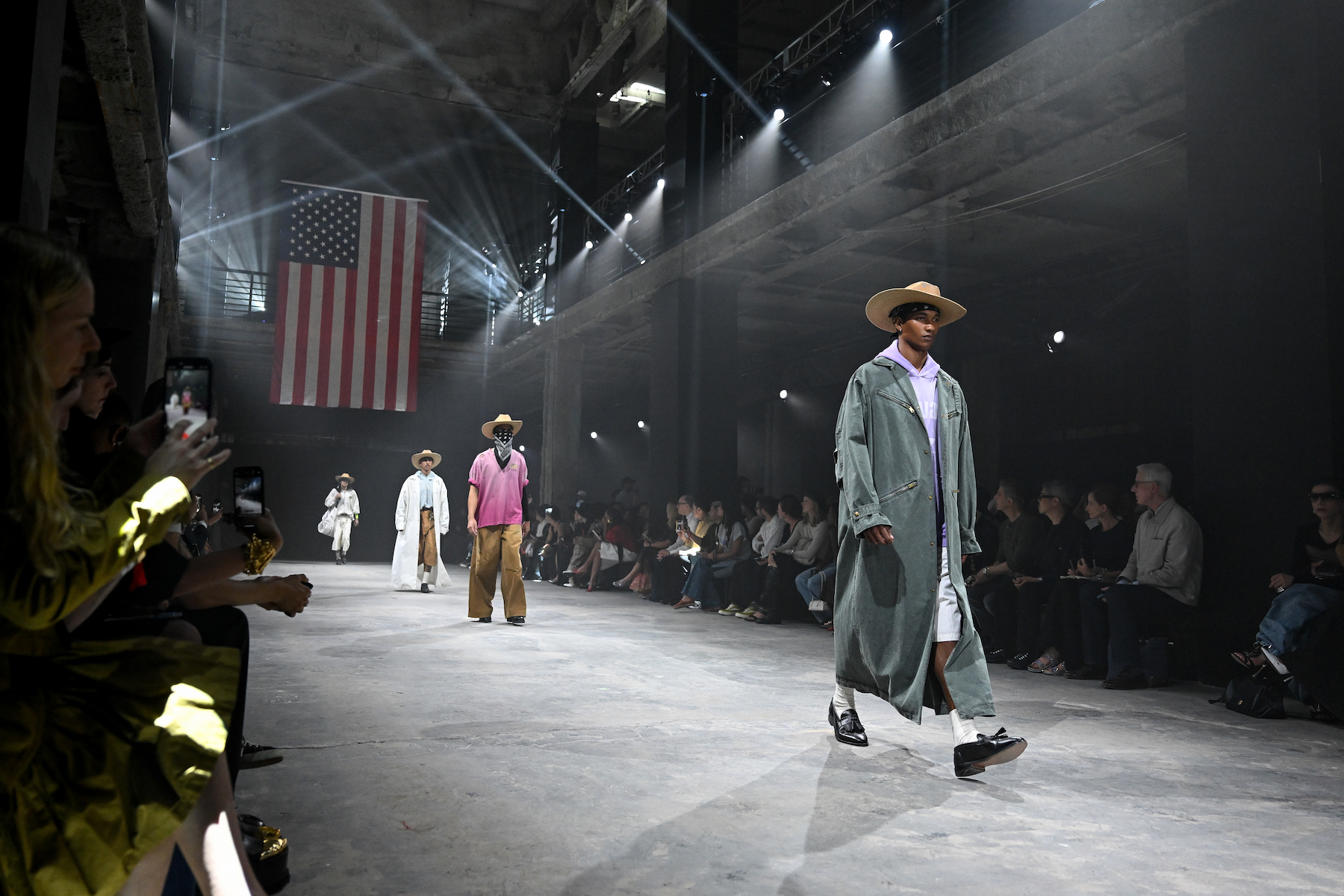
On the final Tuesday of New York Fashion Week was the first – and perhaps only – television debate between Kamala Harris and Donald Trump. Such was the anticipation there were fears that Luar’s runway show, due to take place that evening, would be underattended (it wasn’t: Madonna even made a rare front-row appearance), while those already travelling to London for the next fashion week leg made complicated plans to watch the debate while in the air (they managed, thanks to a BBC iPlayer live stream and aeroplane wifi). Which is to say, the upcoming election loomed large in New York, prompting a dissection of American fashion and what it represents – or what it could represent. Such was the case at Willy Chavarria’s latest show, which saw the designer present an homage to America’s immigrant communities, like those he grew up around in his home city of Fresno, California (Chavarria is the child of an Irish-American mother and Mexican-American father). He did so through riffs on uniforms: hotel managers, farm workers, and employees at electronics chain Circuit City, albeit in his distinct style, which instils a mood of elegance through abundant silhouettes and references to haute couture. ‘Given the time that we’re in – around the corner from a major election – I wanted to shine a light on the people who make this country work,’ he told Wallpaper* at the time. ‘It’s about giving, showing dignity to all of these people.’ Afterwards, guests were given a sticker to remind them to vote.
‘Given the time that we're in, I wanted to shine light on the people who make this country work’
Willy Chavarria
Other designers looked towards the history of American fashion: Tory Burch continued to reference figures like Claire McCardell, a pioneer of American sportswear, as inspiration for her breezy summer collection, while Tommy Hilfiger drafted Wu-Tang Clan to perform at his latest show, a reminder of the longtime synergy between his namesake label and hip hop music (the show took place on a former Staten Island ferry owned by the comedians Pete Davidson and Colin Jost). Sometimes it took an outsider’s eye: against the backdrop of the gleaming New York skyline in Brooklyn Bridge Park, Off-White creative director Ib Kamara staged his debut show in the city, in part an ode to founder Virgil Abloh’s American heritage. It made for a vivid, continent-swapping collection from the Sierre Leone-born designer, which celebrated America as a cultural melting pot. ‘I have vivid memories of what America, and New York in particular, represented in the collective imagination of Africans: a dreamland of utopias made real, a place of opportunities,’ he said. Also making his debut in New York was Belgian designer Pieter Mulier, who showed his latest collection for Alaïa in the dramatic spiralling atrium of the Guggenheim Museum, swapping from Paris for the season. Conjuring the easy glamour of figures like Charles James, Adrian and Halston, as well as McCardell, it was an exemplary collection that showed the rich potential American fashion history still holds for contemporary designers (it was a show that felt like it had been percolating since his exit from American powerhouse Calvin Klein, where he worked alongside Raf Simons, in 2018). ‘[This collection] is a celebration of an American ideology of dress, and through that of a spirit that can unite New York and Paris – of the body in motion, liberated,’ Mulier said. ‘As Alaïa always has been.’
Sometimes things weren’t what they seemed
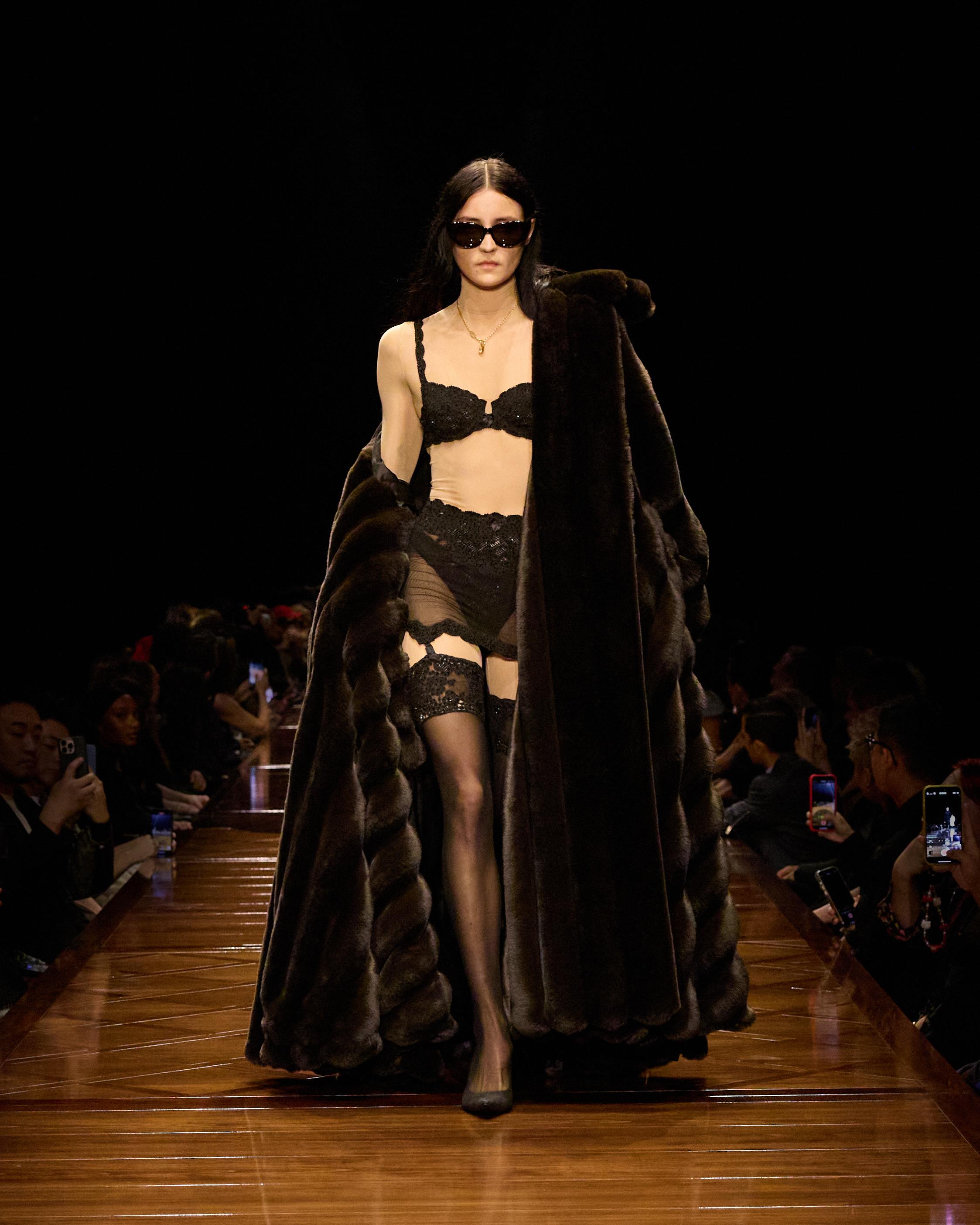
Balenciaga’s S/S 2025 show began with what appeared to be lingerie, though on closer inspection was actually a series of nude bodysuits embroidered with bras, knickers and stockings for a playful visual trick. It captured a mood of disorientation which ran through the season, reflecting the menswear shows earlier this year. Back then, Anderson spoke about ‘things not being what they seem’ in his JW Anderson collection (inspired by the experience of hypnotherapy dredging up past memories), while at Prada the designers spoke about the idea of ‘truth and pretence, the real and the unreal’, a response, they said, to a world where these categories feel increasingly blurred. As such, the technique of trompe l’oeil – the illusion of one garment imprinted onto another – continued to be evoked by designers across women’s fashion month, from JW Anderson’s mini dresses decorated with faux buttons and zips, to printed fur collars and belts in-set into trousers at Prada. Meanwhile, at Moschino, simple white-cotton garments adorned with childlike impressions of trench coats and sailor’s scarves. A similarly illusory mood was conjured in pieces that appeared to have a life of their own – or, indeed lived a life already – whether purposely creased garments at Ferragamo, Bottega Veneta or Victoria Beckham, or dresses at Prada constructed with twisting wired seams. Set into skewiff proportions, they appeared to be leaping off the models’ bodies.
Revisit our coverage of New York, London, Milan and Paris fashion weeks.







